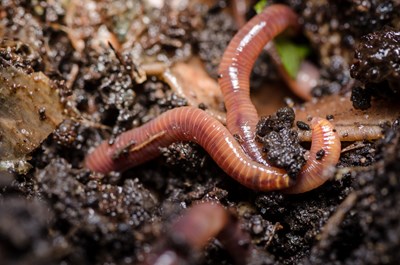Unearth your soil health scores this autumn
(BBRO summary)
Sugar beet yields respond positively to improved soil health. The industry’s Beet Yield Challenge (BYC) indicated that crops which are positively managed for improved soil health, produce between 15-20% more than other crops. Additionally, the BYC highlighted that the resilience of sugar beet crops to events such as drought, is also improved in healthier soils. For example, in drought years, crops achieved 10-15% more of their potential yield compared to crops where soil health was not pro-actively managed and improved.
So, what is a healthy soil, and how can we measure the changes? Soil health is increasingly important when introducing new management approaches, and especially if aligning to ELMS/SFI soil standards. Improvements may include the use of overwinter cover crops, addition of organic amendments and adoption of reduced soil disturbance cultivations. It may also be effective management of basics such as pH, soil nutritional status and crop rotation.
One of the key objectives of the AHDB-BBRO project (2017-2022) targeted the production of a simple, practical tool for use by growers and agronomists for assessing soil health: The Soil Health Scorecard. At the outset, all known indicators of soil health were identified, and these were eventually distilled into a final short-list of eight which included one physical, four chemical, two biological and a microbial indicator (potential mineralisable nitrogen-PMN and a C02-carbon test), where additional detail on soil biology is considered useful. These are highlighted by the chart below:
Fig 1: Soil health scorecard indicators
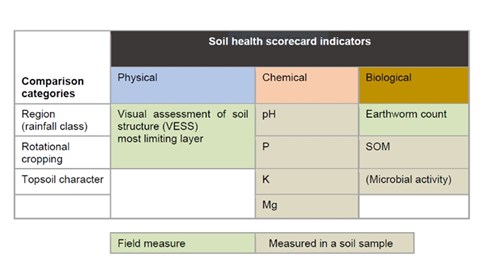
The Soil Health Scorecard has been road-tested and refined over the duration of the project through a collaborative partnership of scientists, growers and agronomists. The testing has included a range of soil types, geographies, crop rotations and different management practices.
The Soil Health Scorecard aims to capture the interactions between physics, chemistry and biology that underpin soil health in a concise and practical format for the user and to provide useful information to inform management. The aim is to provide a set of measures and an interpretation framework that can provide a routine soil health check (every 3-5 years, ideally at the same point in a crop rotation, with a sample in each full rotation). This is to help identify areas where more focus or further detailed sampling may be needed, and support farmers and agronomists when they are evaluating changes in farming systems or management practices.
Making an assessment
Simplicity is central to the soil health check. It involves making some simple assessments of topsoil structure (VESS) and earthworm numbers, and the collection of samples for laboratory analysis from a circle of 10m diameter. It is important to ensure this is representative of the area you want to assess, avoiding headlands marked wheelings, old clamps, and variable soil type. Soils are best sampled ideally in the autumn targeting after harvest, at least one month after any cultivations or additions of organic amendments and importantly when the topsoil is wetted up.
The diagram below represents how you may sample the site. The spade assessment of topsoil structure and earthworm numbers is ideally done down to a depth of 20cm.
Details of how to complete a VESS and earthworm assessment can be found on the On-farm Soil Matters section of the BBRO website
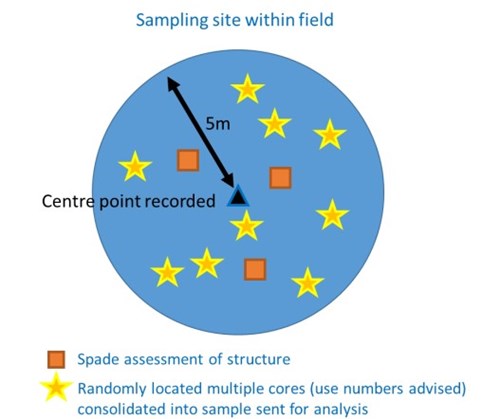
Fig 2: Diagram, example of possible sampling plan
By geo-referencing where the assessment is undertaken (the app ‘what three words’ is great for this) allows subsequent testing at the same location.
Interpretation
When the laboratory analysis results are known, you can complete the values on the scorecard. The interpretation of the Soil Health Scorecard is kept simple by using a Red-Amber-Green (RAG) traffic-light approach (see Fig. 3). The RAG rating has been carefully established with reference to different climatic areas, soil type and rotations to keep it relevant at a site-specific scale.
The benchmarks have been developed for use in cropping systems and lowland grassland. The benchmarks presented here are not applicable to peats/organic soils i.e., those with >20% organic matter to 40 cm depth. A separate set of benchmarks would also be required for upland grass/semi-natural systems. A completed example of the Scorecard is shown (Fig. 3).

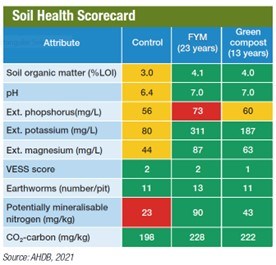
Fig. 3: Example of completed scorecard using the RAG system (Red-Amber-Green)
Testing of an extensive range of soils during the project showed that the indicators gave a strong baseline. It picked up positive effects of organic matter amendments, grass leys and reduced tillage intensity, with pH to be one of most important basic elements to get right. Sugar beet of course is extremely sensitive to low pH, so this is a highly relevant factor in our management of soil health.
A summary of key benchmark values is shown (Fig. 4). They don’t include phosphorus, potassium, and magnesium as the RAG rating is aligned to the soil index level. Effectively, Indices 0 & 1 are assigned red and amber, respectively.
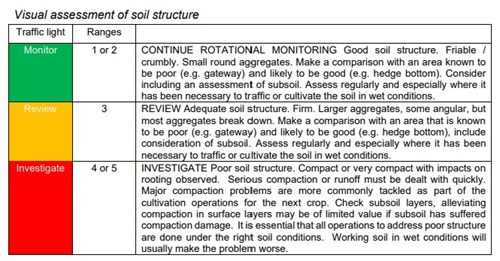

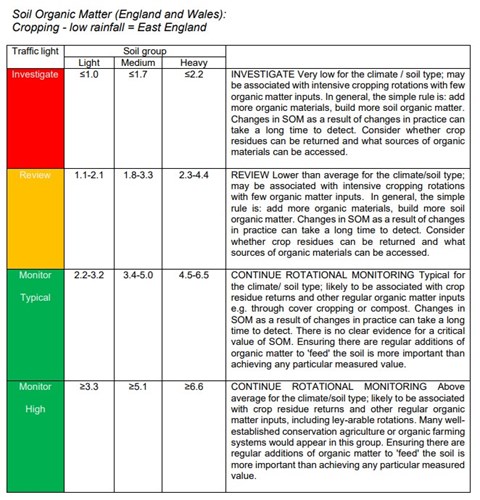
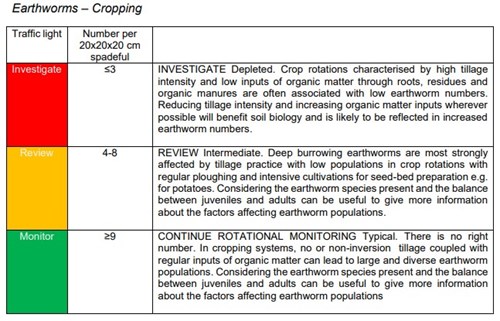
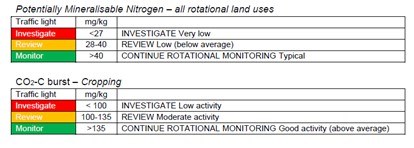
Fig. 4: Summary of key benchmark values.
This document provides a summary of the Soil Health Scorecard system and protocol. A more comprehensive version can be found on the BBRO website. This is titled: Soil Health scorecard approach- Sampling protocol and benchmarking tables.
